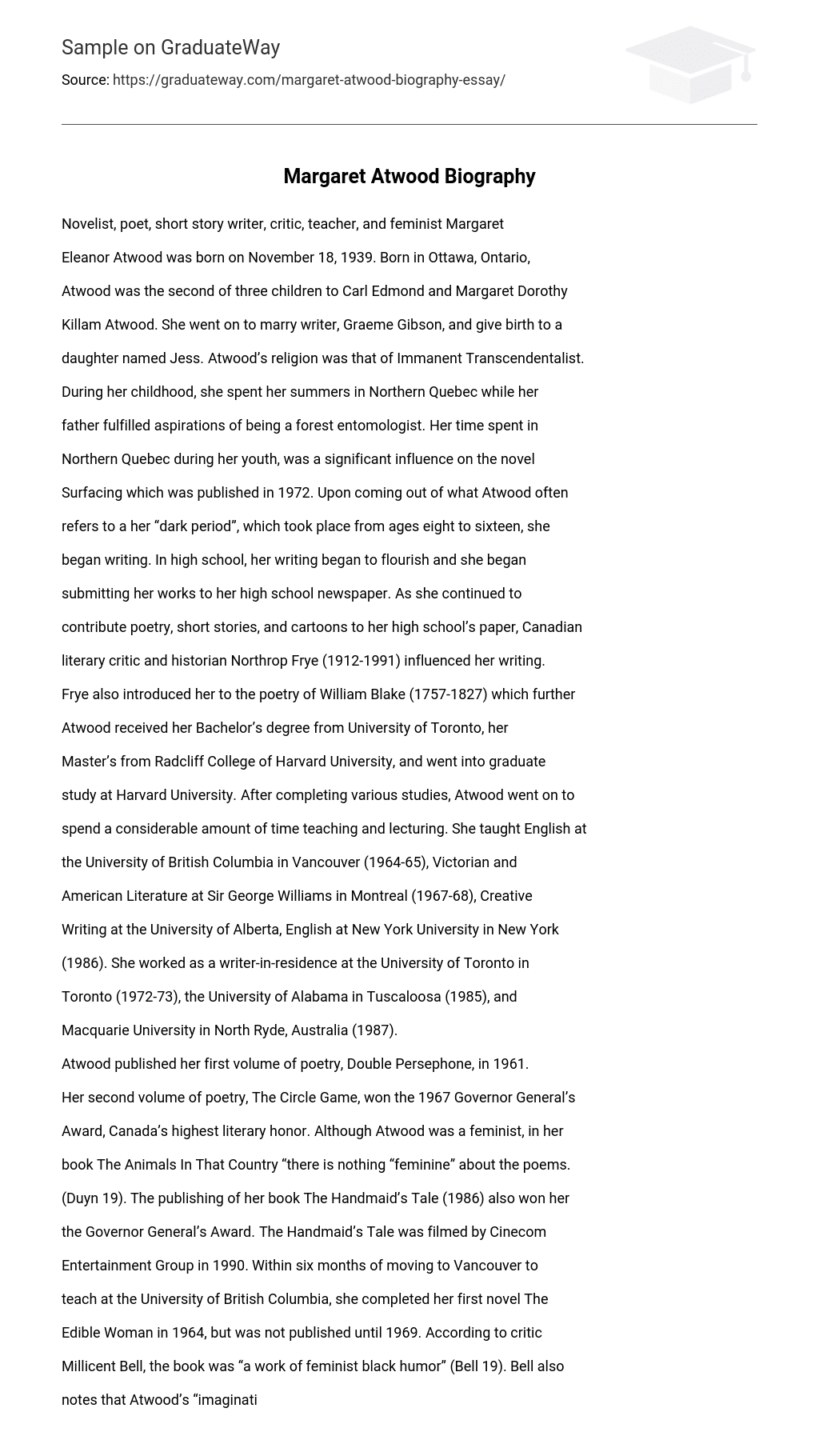Novelist, poet, short story writer, critic, teacher, and feminist Margaret Eleanor Atwood was born on November 18, 1939 in Ottawa, Ontario. She was the second child of Carl Edmond and Margaret Dorothy Killam Atwood. Atwood married writer Graeme Gibson and had a daughter named Jess. She practiced the Immanent Transcendentalist religion.
As a child, she spent her summers in Northern Quebec with her father, who aspired to be a forest entomologist. Her experiences in Northern Quebec greatly impacted the novel Surfacing, which was published in 1972. After overcoming what Atwood often refers to as her “dark period” from ages eight to sixteen, she started her writing journey.
During her time in high school, she began submitting her works to the school newspaper, which helped develop her writing skills. She contributed poetry, short stories, and cartoons to the paper, all of which were influenced by Canadian literary critic and historian Northrop Frye (1912-1991). It was through Frye that she discovered the poetry of William Blake (1757-1827), which had a significant impact on her writing style.
After completing her Bachelor’s degree at the University of Toronto, Atwood went on to earn a Master’s degree from Radcliff College of Harvard University. She then continued with graduate studies at Harvard University before starting a career in teaching and lecturing.
Atwood taught English at the University of British Columbia in Vancouver from 1964 to 1965. Following that, she taught Victorian and American Literature at Sir George Williams in Montreal during 1967-68. Additionally, she taught Creative Writing at the University of Alberta and English at New York University in New York City in 1986.
Margaret Atwood served as a writer-in-residence at the University of Toronto in Toronto from 1972 to 1973. She then held the same position at the University of Alabama in Tuscaloosa in 1985 and was appointed as a writer-in-residence at Macquarie University in North Ryde, Australia in 1987.
In 1961, Atwood released her debut poetry collection called “Double Persephone”. Her second poetry collection, “The Circle Game”, received the esteemed Governor General’s Award in 1967 – Canada’s highest literary recognition.
Despite her feminist beliefs, Atwood’s book The Animals In That Country does not display any traditionally “feminine” qualities in its poems (Duyn 19). Furthermore, she was awarded the Governor General’s Award for her publication of The Handmaid’s Tale in 1986. The film adaptation of The Handmaid’s Tale was also produced by the Cinecom Entertainment Group in 1990. After moving to Vancouver for her teaching position at the University of British Columbia, Atwood completed her initial novel The Edible Woman within six months in 1964, although it wasn’t published until 1969.
According to Millicent Bell, The Edible Woman is considered a “work of feminist, black humor” (Bell 19). Additionally, Bell recognizes that Margaret Eleanor Atwood’s imagination is too unconventional and dark for sitcoms (Bell 19) in her critique of the novel. Atwood’s collection of poetry titled Power Politics has greatly increased her visibility and established her as a significant figure in contemporary literature. As Linda Hutcheon, a respected scholar, points out, Atwood’s numerous reviews and articles have been crucial in cementing her importance.





